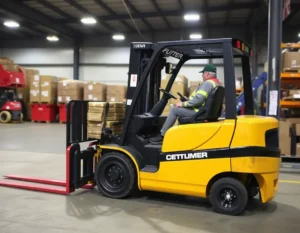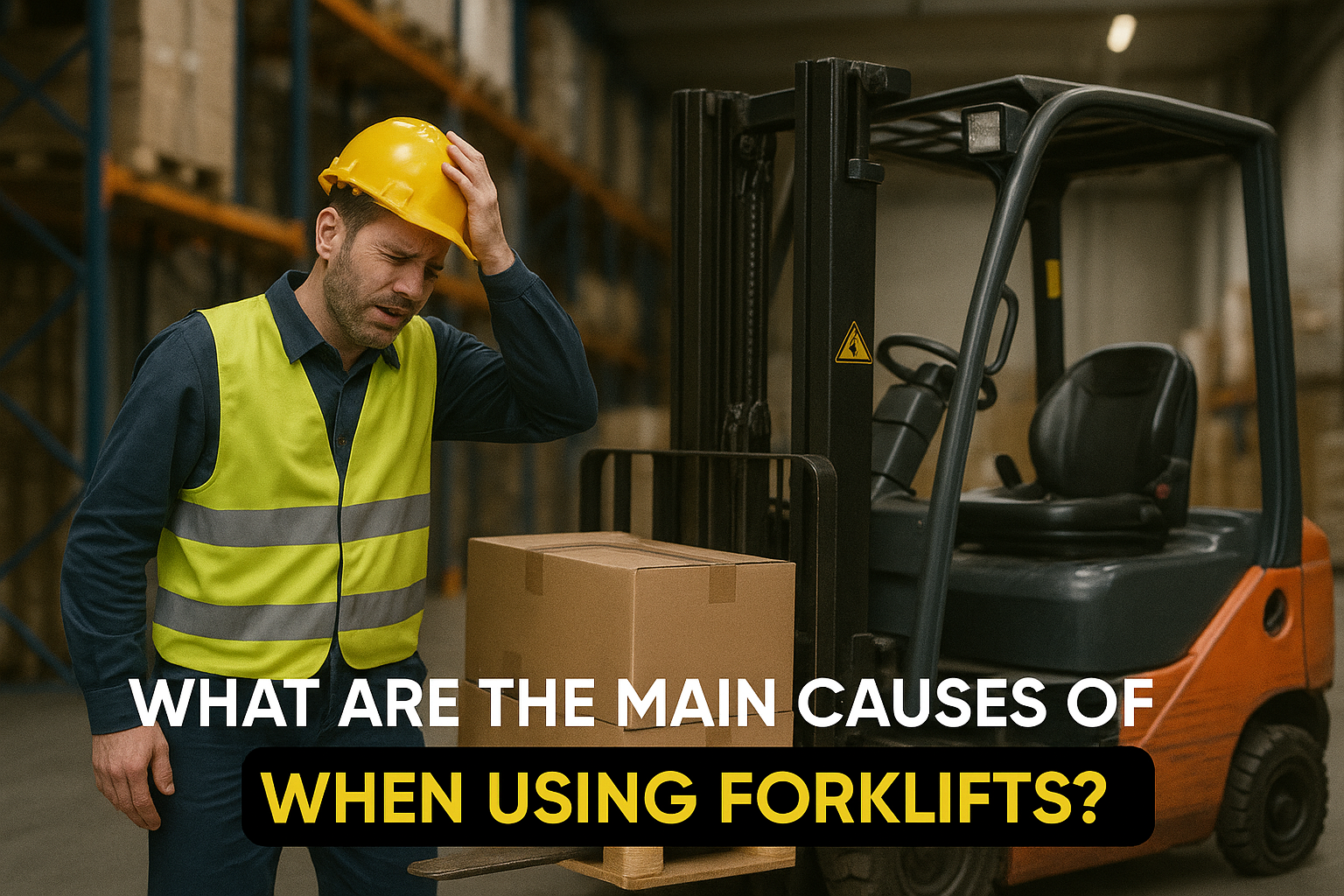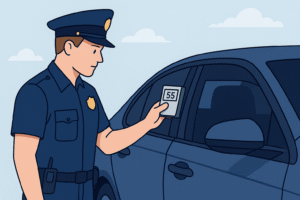The lifters are the lifelines of warehouses, factories, and construction sites. However, beyond all these, they also have their fair share of tragedies whenever they are mishandled. Thousands of injury cases and fatalities are reported each year due to forklift accidents, most of which are preventable. To prevent accidents, such costs are high depending on the nature of injury. In this case, it is necessary to learn about such injury cases and their main causes in order to design safe workplaces.
Lack of Proper Operator Training
Forklift injuries frequently stem from poor training of operators. Large trucks are essentially like cars but differ because special training is required to use them as they are built specifically to implement weight distribution and turning radius and load capacity. Only grit will not prove handy as they may require a skillful maneuver, where courses under extreme conditions would be necessary.
Most incidents are the results of ignorance of the operation limitations of the machine or because of improper safety procedure applications. OSHA has some specific forklift training requirements; however, these requirements are not followed strictly or ignored in many workplaces. Well-trained operators are less likely to cause accidents like tipping, collisions, or load spills.
Improper Lifting and Overloading
Generally, each forklift has a particular weight load for which it is defined. Failure to comply with this weight limit can lead to disaster very fast. Overloading a forklift makes it shift the center of gravity, making it much more likely to tip or become overly difficult to maneuver. This hazard factor gets worse when having to move on an incline or uneven surface.
However, even within the limits of carrying weight, misguiding such as lifting an uncentered and unbalanced load can cause instability too. Most cases of injuries incurred from moving things about are related to either dropping them or causing them to fall. Serious injury is common in these cases for the people who happen to be in proximity to it. The operators ought to learn how to inspect, balance, and secure loads before moving these loads.
Limited Visibility & Blind Spots
Much of the driving of a forklift takes place in tight aisles, very often under shelves, and also through blind spots. Limited visibility is also inherent in those areas where pedestrians are common. Operators are often unaware of other vehicles, obstacles, and perhaps most importantly pedestrians, which leads to considerable risk of various types of collisions.
In addition to internal blind spots, external conditions can affect visibility: the weather (for outdoor forklifts), insufficient lighting, and mirrors that are obstructed. Companies must invest in clear walkways, proper lighting, and rearview or side mirrors to help alleviate these hazards.
Forklift Tipping and Overturning
Tipping is one of the deadliest accidents that can occur with forklifts. These heavy machines possess comparatively high centers of gravity and can easily topple over, particularly when carrying a heavy or imbalanced load. Suddenly turning or quick stopping causes the truck to shift its load and tip over.
Operators sometimes instinctively jump out of the forklift during a tipping incident, often resulting in the operator being crushed under the machine. Survival by staying within the operator’s compartment, while wearing a seat belt, greatly increases. Employers must train workers on tipping hazards and provide guidance on safe turning speeds and load limits.
Fast and Loose Operating
Speeding may cost a few minutes but increases the risk of injury dramatically. A forklift was built not for racing but for slow-moving work, and speed makes it difficult to stop quickly, particularly when it carries a load. Reckless operation, such as weaving tight spaces or taking sharp corners, makes the situation even worse.
- Conducting common reckless behaviors that cause injuries
- Driving with a load elevated
- Sharply turning or Sudden turns
- Disregarding pedestrian zones
- Racing against another forklift
- Using mobile phone while operating
Formation of a safety-first culture with speed enforcement seems to have reduced drastically the number of these incidents.
Poor Maintenance and Equipment Failure
Forklifts are similar to any other equipment; they need periodic maintenance to ensure they can work safely. When routine inspections are not conducted, they might suffer from critical breakdowns such as brake failure, hydraulic leakage, steering problems, and many others. These failures often occur at the time of its operation with very little room for error or time within which to react.
Forklifts that are unfit to be operated are a danger not only to the operators but to everyone in the vicinity. For example, a lifting mechanism could fail during an operation, and the load would come tumbling down and injure workers. Therefore, one way to prevent injury-causing failures in equipment is to conduct regular checks on safety, adhere to servicing schedules, and immediately report faulty equipment.
Pedestrian-Forklift Collisions in Common Areas
Several warehouses and worksites have common areas where pedestrians and forklifts coexist. In the absence of proper segregation, this environment becomes one of the highest-risk zones for these accidents. Oftentimes, the forklift operators may not see the pedestrians crossing their path either due to distraction or poor visibility.
In order to mitigate these risk factors, employers should set out safe walkways for both pedestrians and forklifts. Clear signage posted throughout the workplace, floor markings, and barriers will increase safety. It is also the requirement that pedestrian workers pay attention to the surroundings and keep eye contact with the forklift drivers while crossing paths.
Unsafe Worksite Layout & Bad Floor Conditions
Poorly designed workspaces make even the best workers susceptible to accidents. Narrow aisles, low ceilings, and cramped loading docks provide no margin for error. These designs further lead to greater collisions, tipping incidents, and injuries from poor maneuverability. Some major environmental hazards comprise:
- Spillage of liquid or oil is sure to cause a skid by the forks.
- Potholes or cracks lead the ramp to increased tipping risk.
- Blocked paths result in delays and confusion.
- Poor lighting reduces visibility and time to react
Before most injuries occur when forklift operations are designed into the workspace; then, the risks are drastically reduced. Regular inspection and housekeeping routines also help in maintaining a safer environment.
Improper Parking & Leaving Forklifts Unattended

When a forklift is parked in an unauthorized or unsafe area and is left unattended, it becomes a significant safety issue. Wrongly parked forklifts, either within the gradient, forks elevated, or pedestrian zones-would roll, tip over or obstruct such areas. Most importantly, this becomes a risk when it is located in an area with high traffic.
Forklifts may also get started unattended by accident or tampered with unauthorized personnel. Shut down properly by following specific instructions for lowering, setting the parking brake, and turning off the ignition. Implement a parking protocol and limit access to trained personnel.
Distractions, Fatigue, and Human Error
Despite all the safety measures, human error is still one of the leading causes of injury while operating a forklift. Sometimes the distraction could be mobile phone ringing while at times it could be conversation going on with anybody nearby or noise around.
Fatigue is another important factor. Long hours at work with few breaks, coupled with a physically demanding job, can impair judgment and reflexes. These days, an operator who is suffering from fatigue is not likely to judge distances correctly, see hazards, or remember safety steps. Thus, employer wellness programs, distraction-free zones, and good rest schedules must be instituted to reduce all these risks.
Besides, most of these risk factors do not independently take place. An exhausted employee is more likely to miss a maintenance problem or hurt himself or herself lifting a weight the wrong way. Similarly a bad work site design can increase the risks of poor sight or flawed concentration. This interaction between man and the environment or the engineering side is also the reason why companies need to have a holistic approach to safety; an approach that encompasses education, design and constant supervision.
Conclusion
Forklift is an amazing tool for effective operations; it is also dangerous when mishandled. Training operators, proper load handling, equipment maintenance, and workplace design can contribute to the causes of injuries; they are often interrelated and preventable. Safety policies, regular inspections, and employee training can make a difference. Forklift injuries occur not only by violation of rules; it also considers all the lives of people and develops a life as an accountability culture. Visit here for more topics.





